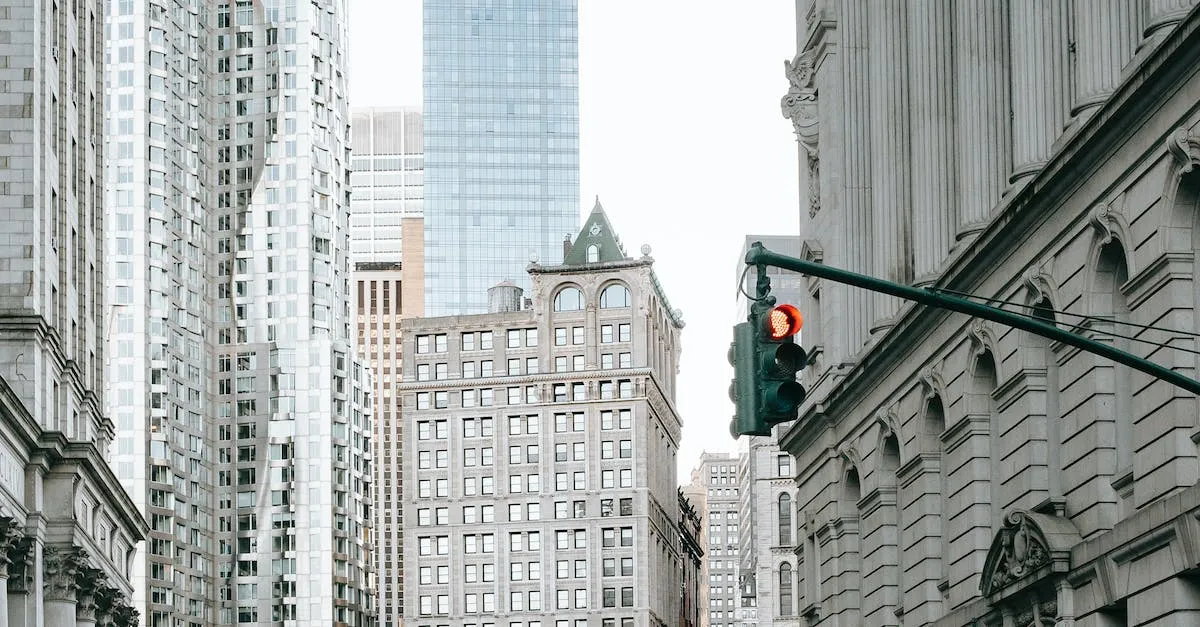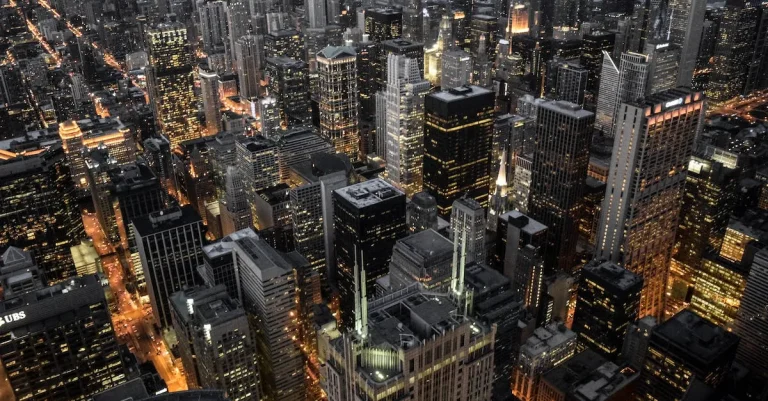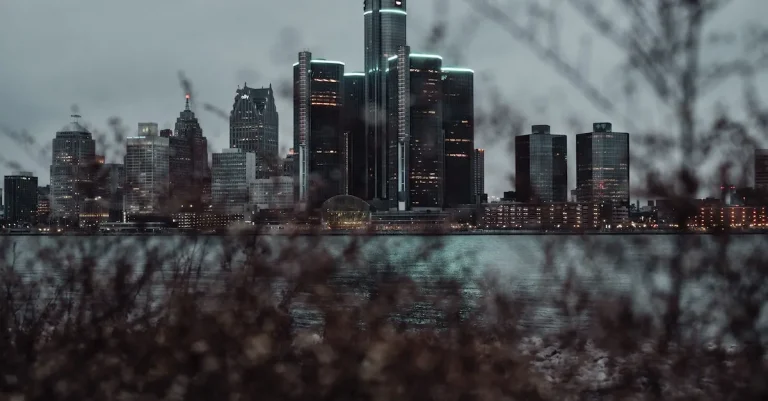West Egg, New York – The Fictional Town From The Great Gatsby
In F. Scott Fitzgerald’s famous 1925 novel The Great Gatsby, the fictional Long Island towns of West Egg and East Egg play important roles. Located on the Gold Coast of Long Island, West Egg is home to the mysterious millionaire Jay Gatsby and serves as a key setting throughout the novel.
If you’re short on time, here’s a quick answer to your question: West Egg is a fictional village in New York that serves as the newly rich Jay Gatsby’s home in F. Scott Fitzgerald’s novel The Great Gatsby.
West Egg’s Origins in The Great Gatsby
West Egg, the fictional town depicted in F. Scott Fitzgerald’s iconic novel, The Great Gatsby, was inspired by the real-life location of Kings Point, New York. Fitzgerald, who himself resided in this affluent area of Long Island, drew upon his personal experiences and observations to create the vivid setting of the novel.
Inspired by Kings Point, New York
Kings Point, known for its opulent mansions and extravagant parties, served as a direct inspiration for the extravagant lifestyle portrayed in West Egg. In his novel, Fitzgerald brilliantly captured the essence of this elite enclave, showcasing the excesses and indulgences of the wealthy residents.
With its stunning waterfront properties and lush landscapes, Kings Point provided Fitzgerald with the perfect backdrop for Jay Gatsby’s lavish mansion and the extravagant parties that took place within its walls.
The author masterfully depicted the grandeur and allure of this fictional world, immersing readers in a realm of wealth and luxury.
The influence of Kings Point on West Egg is evident in the novel’s vivid descriptions of sprawling lawns, elaborate gardens, and magnificent mansions. Fitzgerald’s attention to detail allows readers to visualize the decadent surroundings and imagine themselves as part of this glamorous world.
Contrasted with Old Money East Egg
One of the key elements that make West Egg such a compelling setting in The Great Gatsby is its stark contrast with the neighboring town of East Egg. While West Egg represents the newly wealthy, characterized by individuals like Jay Gatsby who have recently acquired their wealth, East Egg symbolizes the old money aristocracy.
In East Egg, inherited wealth and social standing are highly valued, and individuals like Tom and Daisy Buchanan are considered part of the established elite. This juxtaposition between old and new money serves as a central theme in the novel, highlighting the tensions and divisions within the upper class of 1920s America.
The dichotomy between West Egg and East Egg adds depth to the story, allowing Fitzgerald to explore themes of ambition, social class, and the pursuit of the American Dream. By presenting these two contrasting worlds, the author invites readers to reflect on the nature of wealth, privilege, and the illusions that can be created by material success.
West Egg’s Geography and Layout
West Egg, the fictional town from F. Scott Fitzgerald’s novel “The Great Gatsby,” is located on Long Island’s Gold Coast. This picturesque region stretches along the northern shore of the island and is known for its extravagant mansions, stunning landscapes, and breathtaking views of the Long Island Sound.
West Egg, specifically, is positioned to the west of East Egg, another fictional town in the novel.
Location on Long Island’s Gold Coast
Long Island’s Gold Coast gained its name due to the abundance of wealth and opulence that characterized this area in the early 20th century. The region was home to some of the wealthiest families in America, who built grand estates and enjoyed a life of luxury.
West Egg, with its proximity to New York City and its stunning waterfront location, became a popular destination for the rich and famous looking to escape the hustle and bustle of the city.
The scenic beauty of West Egg and its surrounding areas attracted many prominent individuals, including industrialists, financiers, and celebrities. The town’s geography, with its rolling hills, lush greenery, and sparkling waters, provided the perfect backdrop for the lavish lifestyles depicted in “The Great Gatsby.”
Today, Long Island’s Gold Coast continues to be a sought-after location, offering a mix of historical charm and modern amenities. Visitors can explore the grand mansions, visit museums dedicated to the region’s history, and enjoy the scenic beauty that inspired Fitzgerald’s vivid descriptions in his novel.
Gatsby’s Mansion and Other Estates
One of the most iconic landmarks in West Egg is Jay Gatsby’s mansion. Described as a “colossal affair by any standard,” Gatsby’s home symbolizes the excess and grandeur of the era. The mansion’s opulent parties, attended by the who’s who of New York society, were a central element of the novel’s plot.
In addition to Gatsby’s mansion, West Egg is home to numerous other impressive estates owned by wealthy individuals. These estates, with their sprawling lawns, ornate architecture, and breathtaking views, showcase the extravagant lifestyles of the characters in “The Great Gatsby.”
To get a glimpse into the world of Gatsby and his contemporaries, visitors can tour some of the real-life mansions that inspired Fitzgerald’s descriptions. One such example is the Vanderbilt Mansion, a National Historic Site located near West Egg.
This magnificent estate offers a glimpse into the opulent lifestyle of the wealthy elite during the Gilded Age.
Exploring the geography and layout of West Egg allows readers and visitors alike to immerse themselves in the world of “The Great Gatsby.” Whether it’s admiring the stunning vistas or imagining the grand parties held in Gatsby’s mansion, West Egg continues to captivate audiences with its allure and timeless charm.
West Egg’s Residents and Society
West Egg, New York, is a fictional town that is prominently featured in F. Scott Fitzgerald’s iconic novel, The Great Gatsby. The town is known for its affluent residents and their extravagant lifestyles. Let’s take a closer look at the residents and society of West Egg.
New Money vs Old Money
In West Egg, there is a stark divide between the residents who possess “new money” and those who come from “old money.” The term “new money” refers to individuals who have recently acquired their wealth, often through business ventures or other entrepreneurial pursuits.
On the other hand, “old money” refers to families who have inherited their wealth and have been part of the upper class for generations.
The clash between new money and old money is a recurring theme in The Great Gatsby. The residents of West Egg who have newly acquired wealth often display their prosperity through ostentatious displays of wealth, such as extravagant parties and luxurious possessions.
In contrast, those from old money tend to be more reserved and have a sense of entitlement, as they have been part of the upper class for generations.
This divide between new money and old money in West Egg reflects the social and economic changes that occurred during the Roaring Twenties, a period of great economic growth and excess in America. Fitzgerald uses this divide to explore themes of social stratification, the elusive American Dream, and the corrupting influence of wealth.
Lavish Parties and Decadence
One of the most notable aspects of West Egg’s society is the prevalence of lavish parties and decadent lifestyles. Jay Gatsby, one of the novel’s central characters, is famous for his extravagant parties that attract the who’s who of West Egg and beyond.
These parties are a symbol of the excess and superficiality that characterized the Jazz Age.
The parties in West Egg are described in vivid detail by Fitzgerald, showcasing the opulence and grandeur that the residents indulge in. The guests are adorned in glamorous attire, the champagne flows freely, and the music never stops.
These parties are a spectacle of wealth and hedonism, providing a stark contrast to the moral decay and emptiness that lies beneath the surface.
While the parties in West Egg are meant to be a source of entertainment and escapism, they also serve as a commentary on the emptiness of materialism and the pursuit of pleasure. Fitzgerald uses these parties to critique the shallow and superficial nature of the upper class during this time period.
Significant Events in West Egg
Gatsby’s Extravagant Parties
One of the most notable events in West Egg was undoubtedly the extravagant parties hosted by Jay Gatsby. Gatsby’s parties were legendary, known for their opulence and grandeur. The parties were held at Gatsby’s lavish mansion, which was located on the waterfront and stood as a symbol of his wealth and success.
The atmosphere at these parties was electric, with guests from all walks of life mingling and reveling in the festivities. The music, the dancing, and the flowing champagne created an air of excitement and indulgence that was hard to resist.
The parties were not only a display of Gatsby’s wealth but also served a deeper purpose. Gatsby threw these extravagant soirées in the hope that his long-lost love, Daisy Buchanan, would attend one and be reunited with him.
Gatsby believed that by flaunting his wealth and success, he would be able to win Daisy back. These parties were a testament to Gatsby’s determination and his relentless pursuit of the American Dream.
These lavish parties also provided a glimpse into the decadence and excess of the Jazz Age. The roaring twenties were a time of economic prosperity and social upheaval, and Gatsby’s parties captured the spirit of the era.
They were a symbol of the newfound freedom and hedonism that characterized the time period.
Climactic Confrontation and Tragedy
The climax of The Great Gatsby takes place in West Egg, where a series of events unfold, leading to the tragic downfall of Jay Gatsby. Gatsby’s grand dreams and illusions come crashing down as the truth about his past and his obsession with Daisy is revealed.
The climactic confrontation occurs when Tom Buchanan, Daisy’s husband, discovers the affair between Gatsby and Daisy. The tension builds as Gatsby and Tom confront each other, with emotions running high.
Ultimately, this confrontation leads to tragedy, as Tom reveals Gatsby’s criminal activities and his shady past. The consequences of Gatsby’s ill-fated pursuit of the American Dream are devastating, and his life tragically ends.
The tragic ending of The Great Gatsby serves as a cautionary tale, highlighting the dangers of chasing wealth and status without considering the consequences. It is a stark reminder that money and material possessions cannot buy happiness or true love.
The events in West Egg, particularly Gatsby’s extravagant parties and the climactic confrontation, play a significant role in shaping the narrative of The Great Gatsby. They provide insight into the themes of wealth, love, and the corrupting influence of the American Dream.
For more information on The Great Gatsby and its significance, you can visit SparkNotes.
West Egg’s Significance in The Great Gatsby
One of the key elements that makes West Egg such a significant setting in The Great Gatsby is its portrayal of the nouveau riche. This fictional town on Long Island is home to characters like Jay Gatsby who have recently acquired their wealth and are eager to flaunt it.
The opulent mansions, extravagant parties, and flashy lifestyles of West Egg residents represent the rise of the newly wealthy class in the 1920s. This social phenomenon, known as the “Roaring Twenties,” is a major theme in the novel and West Egg serves as a vivid backdrop to showcase the excesses and ambitions of this era.
In contrast to the ostentatious West Egg, the neighboring town of East Egg represents the old money aristocracy. While West Egg is characterized by its flamboyance and a sense of new beginnings, East Egg is known for its conservatism and established lineage.
The contrasting nature of these two towns highlights the divide between the newly rich and the established elite, creating a tension that drives the narrative forward.
According to some literary critics, West Egg can also be seen as a symbol of the American Dream. The residents of West Egg, including Gatsby himself, have worked hard to achieve their wealth and success.
However, the excessive materialism and hedonism that define West Egg suggest that the pursuit of the American Dream is not always as fulfilling as it may seem.
For further insights into the significance of West Egg in The Great Gatsby, you can visit SparkNotes or Shmoop for detailed analysis and interpretations.
Conclusion
As the humble home of the wealthy and mysterious Jay Gatsby, the fictional village of West Egg plays an important role in establishing setting, atmosphere and social commentary in F. Scott Fitzgerald’s acclaimed novel. Though entirely imaginary, West Egg takes on a vivid life of its own throughout The Great Gatsby.
The tensions between old and new money, conservatism and decadence, are vividly embodied in the depiction of the twin Eggs of Long Island.








